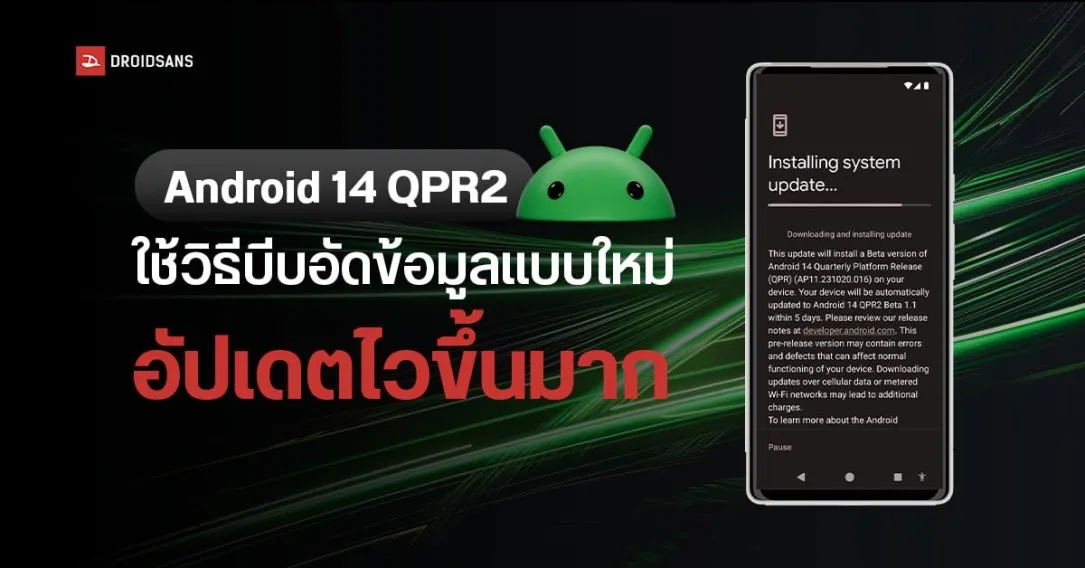By: Admin -
On: Jun 04, 2021
Successful completion of largest project in Europe.
Earlier, working from home was considered a perk and rarity. Fast-forward to 2020 and we are in circumstances that have not only made remote working the new normal but a requisite. The companies that already had the infrastructure to facilitate remote working may find it slightly easier than the ones who didn’t, but this entire mind-shift of switching to 100% remote working hasn’t been an easy one. The companies that previously provisioned for their employees to work from home offered it as an option and in small clusters. No one could have possibly foreseen a situation where the entire workforce needs to work from home and for an indefinite period.
As the human resource and change management teams in every organization are making provisions to ensure that employees are connected, engaged and reassured in difficult times, one of the most-undervalued and heavily-burdened teams is the IT team. IT departments across all organizations are under tremendous pressure to not just facilitate infrastructure for remote working but also to make sure that it is up and running for productive outcomes, when they themselves are working from home. The IT departments have to mitigate several challenges that are ushered in by ‘working from home’, make sure that the employees can extend uninterrupted productivity from home networks, the security of the corporate data is undeterred and there are shorter downtimes. While organizations might have a number of productivity mapping tools, remote working technologies and communication channels in place, what makes it easy for the IT teams is to bring all the devices used for ‘remote working’ under one comprehensive umbrella to maintain end-to-end security. And a remote device management solution is the obvious answer. But as the IT teams try to facilitate this giant shift, they cannot be possibly beating their head around a mobile device management solution that is complex, loaded with overwhelming features and a platform with a huge learning curve. They need a solution that is quick and easy to set up and yet packed with all the features that need to make the wfh exercise smooth and effective. And this is where Scalefusion MDM steps in. Let’s see how Scalefusion MDM makes provisioning remote working easier for the IT departments:1. Simplified device provisioning
 The prime challenge that stands before the IT teams in charge of provisioning the wfh is to onboard the devices on the MDM platform. Scalefusion helps in driving bulk enrollment of company-owned devices with the help of several enrollment options. The new devices that have to yet be unboxed can be provisioned with Zero-touch where the admins do not need to manually enroll individual devices on the MDM platform.
iOS and macOS devices can be provisioned using Apple Device Enrollment Program (DEP), Android devices can be enrolled using Android Zero-touch, Samsung Knox devices can be onboarded using Samsung KME and Windows 10 devices can be provisioned with the help of Windows Autopilot. These devices can be provisioned over the air and directly shipped to the employee, saving several IT hours as well as costs.
IT teams might also need to be ready to onboard the employee’s personal devices that they are going to use for remote working. For employee-owned devices, employees can initiate self-setup by following through a simple email sent on their corporate ID.
The prime challenge that stands before the IT teams in charge of provisioning the wfh is to onboard the devices on the MDM platform. Scalefusion helps in driving bulk enrollment of company-owned devices with the help of several enrollment options. The new devices that have to yet be unboxed can be provisioned with Zero-touch where the admins do not need to manually enroll individual devices on the MDM platform.
iOS and macOS devices can be provisioned using Apple Device Enrollment Program (DEP), Android devices can be enrolled using Android Zero-touch, Samsung Knox devices can be onboarded using Samsung KME and Windows 10 devices can be provisioned with the help of Windows Autopilot. These devices can be provisioned over the air and directly shipped to the employee, saving several IT hours as well as costs.
IT teams might also need to be ready to onboard the employee’s personal devices that they are going to use for remote working. For employee-owned devices, employees can initiate self-setup by following through a simple email sent on their corporate ID.
2. Seamless application deployment
 For ensuring employee productivity while remote working, it is imperative that the employees have consistent access to business applications. The right set of business apps and resources, especially the ones dedicated to remote working, have to be made available on the devices and quickly so. All of this while being placed at different geographical locations and without interfering with the employee’s ongoing activities is a real challenge for the IT teams.
Scalefusion application management makes it easy. IT teams can silently install apps on the device fleet while the employees continue their work. These apps can be public apps available on the Playstore, App Store or Windows Business store for Android, Apple and Windows 10 devices respectively. Scalefusion application management enables IT teams to quickly search for their required app on the Scalefusion dashboard and install, configure and update it with ease.
For ensuring employee productivity while remote working, it is imperative that the employees have consistent access to business applications. The right set of business apps and resources, especially the ones dedicated to remote working, have to be made available on the devices and quickly so. All of this while being placed at different geographical locations and without interfering with the employee’s ongoing activities is a real challenge for the IT teams.
Scalefusion application management makes it easy. IT teams can silently install apps on the device fleet while the employees continue their work. These apps can be public apps available on the Playstore, App Store or Windows Business store for Android, Apple and Windows 10 devices respectively. Scalefusion application management enables IT teams to quickly search for their required app on the Scalefusion dashboard and install, configure and update it with ease. For private apps built-to-order for any organization, the IT depts can quickly upload the app on the Scalefusion enterprise store and push it silently on the device fleet.
3. Device and data security
 When the employees are working on corporate devices and data outside of the traditional confines of office space, the security concerns are higher and so are the risks. The IT teams can no longer have control over the networks that employees connect to, for example, they might be working out of a cafe, or using a shared network in their residence.
To avoid security risks, the IT depts can take advantage of several preventive security features of Scalefusion. This includes controlling app download and web browsing to prevent malware installation, enforcing strict password policy for access control and disabling safe mode boot and factory resets (on Android).
For securing corporate data, IT depts can configure several precautionary settings, for example, on Windows 10 devices, IT depts can enable Bitlocker and Windows Information Policy (WIP) for data protection and encryption. Security and compliance maintenance is not a one-time task but an on-going activity. To handle the unforeseeable security risks and to keep an eye on the entire device inventory, Scalefusion comes to the rescue. IT teams can track the security of all the devices by scheduling and automating security and compliance checks and take quick actions whenever a breach is detected. When a security breach is detected, quick corrective measures can be initiated such as remote wipe-off and blocking device access. Also, don’t forget – that the security of corporate data – are important elements of stability for your company, so the use of different user tracking software, is one of the important methods of preventing unplanned data leaks
When the employees are working on corporate devices and data outside of the traditional confines of office space, the security concerns are higher and so are the risks. The IT teams can no longer have control over the networks that employees connect to, for example, they might be working out of a cafe, or using a shared network in their residence.
To avoid security risks, the IT depts can take advantage of several preventive security features of Scalefusion. This includes controlling app download and web browsing to prevent malware installation, enforcing strict password policy for access control and disabling safe mode boot and factory resets (on Android).
For securing corporate data, IT depts can configure several precautionary settings, for example, on Windows 10 devices, IT depts can enable Bitlocker and Windows Information Policy (WIP) for data protection and encryption. Security and compliance maintenance is not a one-time task but an on-going activity. To handle the unforeseeable security risks and to keep an eye on the entire device inventory, Scalefusion comes to the rescue. IT teams can track the security of all the devices by scheduling and automating security and compliance checks and take quick actions whenever a breach is detected. When a security breach is detected, quick corrective measures can be initiated such as remote wipe-off and blocking device access. Also, don’t forget – that the security of corporate data – are important elements of stability for your company, so the use of different user tracking software, is one of the important methods of preventing unplanned data leaks
4. Controlled software updates
 Another predictable security vulnerability that can also hamper the productivity and performance of the employees and the devices respectively is the lack of constant updates. The chances of employees missing out on the due updates are high, especially while working remotely. New OS update patches are critical for the device performance and security, but cannot be automated either. Because if executed haphazardly, they can negatively impact the legacy apps and systems.
To mitigate this, IT depts can streamline software updates periodically, testing them out first before pushing massive roll-outs. They can schedule a device maintenance time, roll-out a reboot and schedule a device reboot for smooth device functioning, without having to manually carry out the operations at odd hours.
Another predictable security vulnerability that can also hamper the productivity and performance of the employees and the devices respectively is the lack of constant updates. The chances of employees missing out on the due updates are high, especially while working remotely. New OS update patches are critical for the device performance and security, but cannot be automated either. Because if executed haphazardly, they can negatively impact the legacy apps and systems.
To mitigate this, IT depts can streamline software updates periodically, testing them out first before pushing massive roll-outs. They can schedule a device maintenance time, roll-out a reboot and schedule a device reboot for smooth device functioning, without having to manually carry out the operations at odd hours.
5. Remote troubleshooting & support
 In a typical office setting, on a normal day, when an employee comes to work and his/her device runs into an error, the IT team quickly addresses the situation by personally checking up on the device status. While working from home, shortening the device downtime and getting the devices up and running without errors is a massive challenge for the IT depts.
In a typical office setting, on a normal day, when an employee comes to work and his/her device runs into an error, the IT team quickly addresses the situation by personally checking up on the device status. While working from home, shortening the device downtime and getting the devices up and running without errors is a massive challenge for the IT depts. On a few occasions, the employee might be able to pinpoint an issue but in most cases, the employees have no idea of what’s causing the device operations to fail. To solve this particular challenge of remotely troubleshooting device issues on Android and iOS, IT depts can mirror the device screens on the dashboard, gather better insight into the issue and resolve it quickly by pushing relevant files/updates/settings. For unresolved issues, they can generate context-aware support tickets on the integrated ITSM tool.
6. Quick roll-out
 One of the biggest hurdles for IT teams in provisioning remote working in compelling times is the urgency. Sure, they’ve chosen their MDM solution but might be wondering how long will it take to actually start provisioning the devices so that the employees can get (back) to work?
With Scalefusion’s easy-to-use dashboard, that’s one less thing to worry about. Scalefusion is known for its ease of set up and IT depts can practically start device provisioning within minutes, using a single computer. IT admins can get started by using their Office 365 AD or G-Suite credentials, add and invite users and closely monitor devices enrolled, users onboarded and device states.
Scaleusion’s support and training team is right here to help the IT depts out at each step but with the clutter-free dashboard, it is indeed a short learning curve. For large and complex deployments, Scalefusion’s dedicated onboarding experts can do the hand-holding for making your remote working enablement a cakewalk.
When the majority of the workforce or practically the entire workforce works from home, it is natural for the IT depts to be overwhelmed with the provisioning activity. But with the help of Scalefusion MDM, not just provisioning but also maintaining a remote working infrastructure is frictionless.
credit : Scalefusion
One of the biggest hurdles for IT teams in provisioning remote working in compelling times is the urgency. Sure, they’ve chosen their MDM solution but might be wondering how long will it take to actually start provisioning the devices so that the employees can get (back) to work?
With Scalefusion’s easy-to-use dashboard, that’s one less thing to worry about. Scalefusion is known for its ease of set up and IT depts can practically start device provisioning within minutes, using a single computer. IT admins can get started by using their Office 365 AD or G-Suite credentials, add and invite users and closely monitor devices enrolled, users onboarded and device states.
Scaleusion’s support and training team is right here to help the IT depts out at each step but with the clutter-free dashboard, it is indeed a short learning curve. For large and complex deployments, Scalefusion’s dedicated onboarding experts can do the hand-holding for making your remote working enablement a cakewalk.
When the majority of the workforce or practically the entire workforce works from home, it is natural for the IT depts to be overwhelmed with the provisioning activity. But with the help of Scalefusion MDM, not just provisioning but also maintaining a remote working infrastructure is frictionless.
credit : Scalefusion





